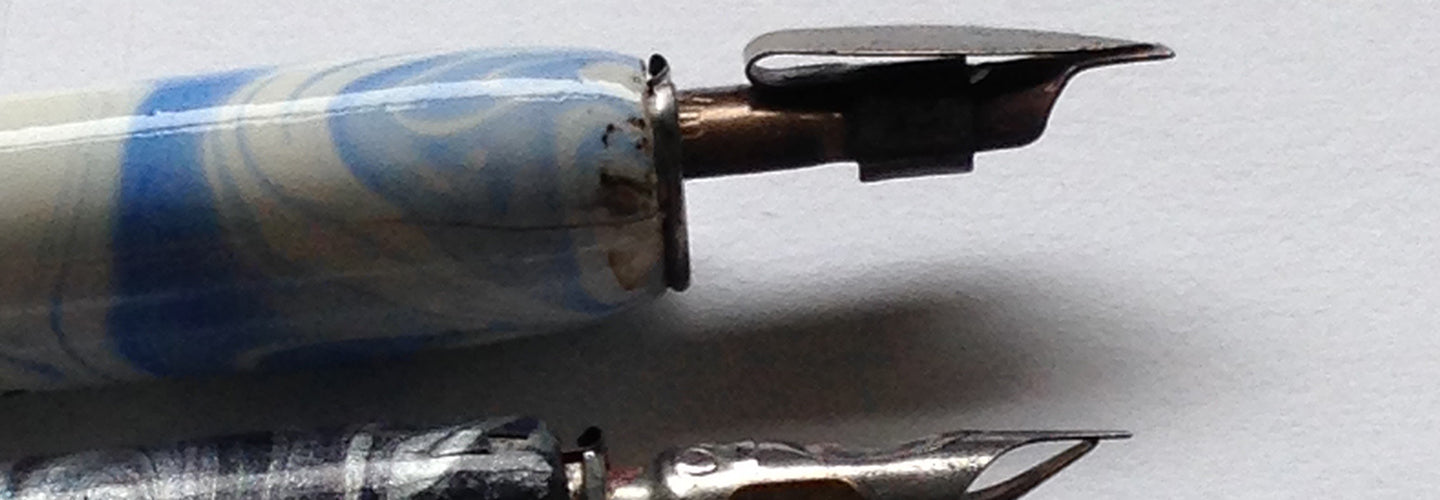
Ink Flow Problems
At some point everyone experiences problems with ink flow and when it happens it can cause extreme frustration! You dip the nib in the ink, or load it with a brush start to write and nothing happens. Luckily there are a few tips and tricks that will usually fix the problem. The ink flow problem can be caused by a combination of one or more of the following factors.
New nibs
You are most likely to get problems when the nib is new. This is because the nib comes from the manufacturer with a protective lacquer coating to stop it from rusty. Usually, once this coating has been removed the ink will flow easily from the nib. A good indication of the nib having the protective coat on it is if the ink sits as a blob on the nib.
There are several methods of removing the lacquer and you can read up about these techniques in the How to Prepare nibs post.
Damaged Nibs
If a nib is damaged it can prevent the ink from flowing. The tines on smaller nibs and especially small pointed nibs can easily overlap or get bent. Overlapping tines can usually be pushed back in to place. If the tines are bent they can sometimes be bent back in to shape, but it can be quite awkward getting the tines to line up perfectly. Often it will be necessary to replace nibs which have bent tines.
Reservoirs
Most edged nibs use a reservoir to hold more ink and give an even ink flow.

Some nibs are purchased with an attached reservoir whilst other nibs like the William Mitchell and Leonardt nibs have separate reservoirs which have to be attached to the nib before use.
Attaching a reservoir to the nib correctly can be tricky; how tight the reservoir fits the nib and the distance between the edge of the nib and tip of the reservoir will affect the ink flow. Follow the instructions on how to fit a reservoir to be sure this has been done correctly.
The distance of the reservoir to the end of the nib will vary the ink flow.

If the nib is purchased with a reservoir like the Brause and Speedball nibs then it should already be fitted correctly. Ink flow problems are more likely to occur with these nibs once they have been used for a while, due to the build up of ink over a period of time. In this case remove the reservoir and clean it and the nib before re-assembling. (Speedball nibs cannot be easily disassembled).
Typically only a few letters can be written before loading the nib with more ink. This will of course vary depending upon the height of the letters and size of the nib used.
Pressure on the Nib
Normally when using an edged nib, you do not want to put too much pressure on the nib whilst writing. Only a very light pressure should be applied. However, a good way to start the ink flowing is to apply a bit more pressure on the nib such that the tines just start to splay. At that point give the nib a very slight wiggle from left to right. You want to wiggle on the spot so no ink marks are made on the paper, just the hand and pen holder move slightly.
Paper
The choice of paper is always important with calligraphy. When ever possible use a smooth paper to produce a smooth line. A smooth paper will give crisper lines.
